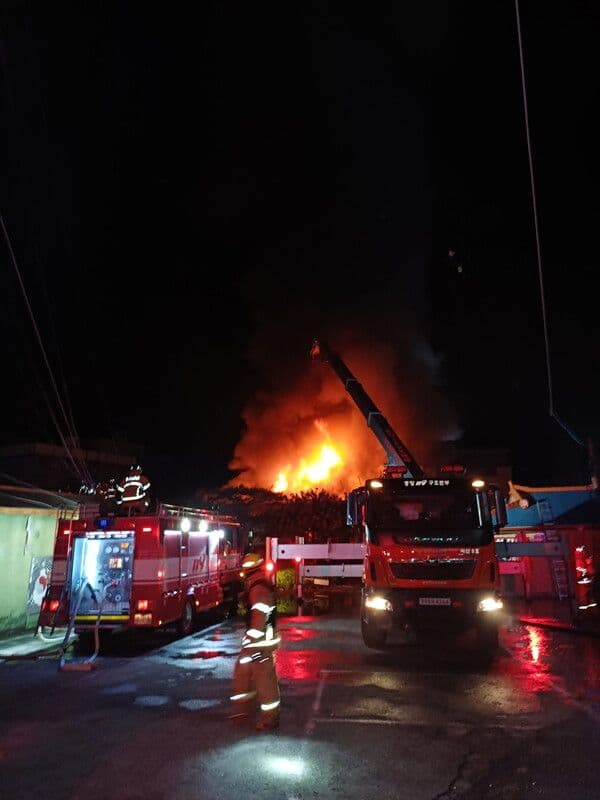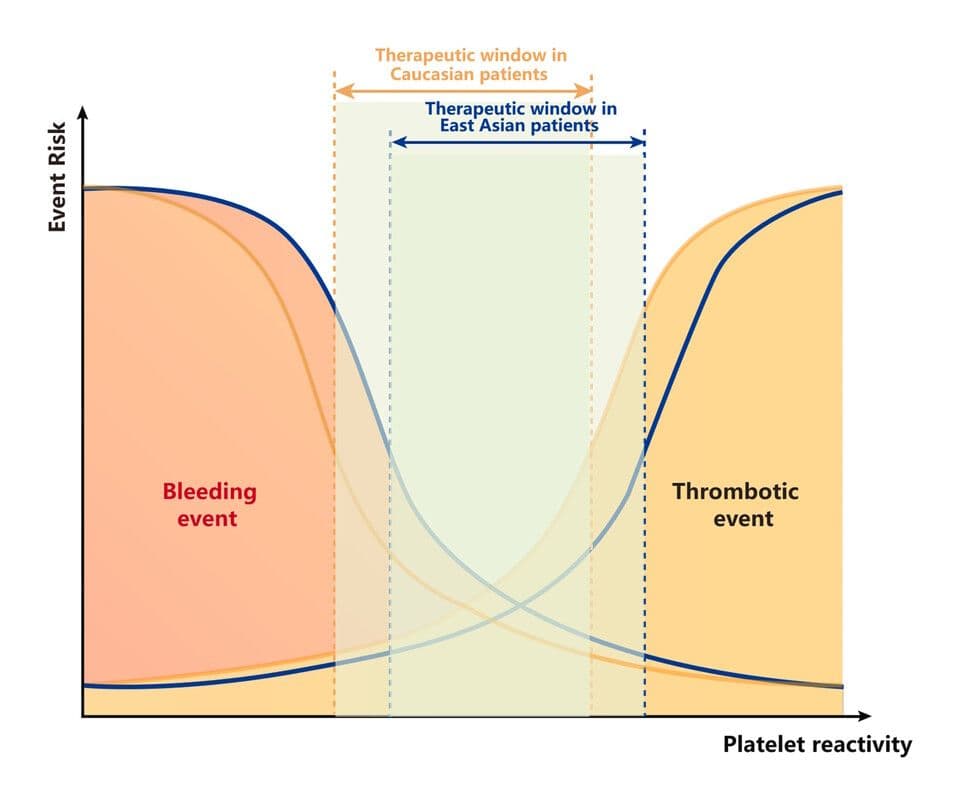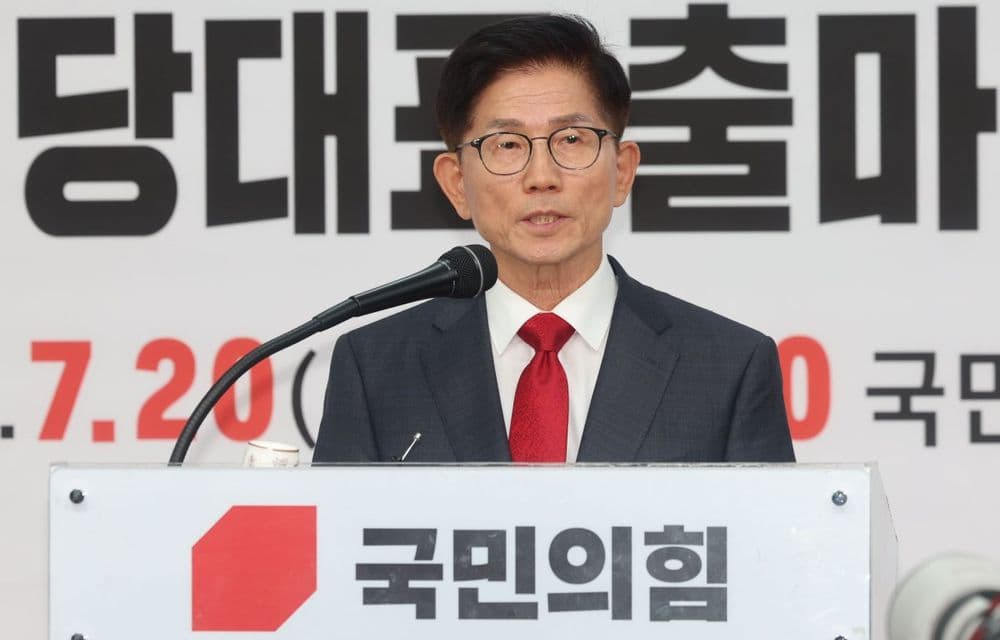When Flames Met Fate: The Seosan Restaurant Fire That Had Everyone Talking

The Night Everything Changed
Have you ever wondered what goes through people's minds when they see flames lighting up the night sky? On the evening of July 24, 2025, residents of Daesan-eup in Seosan City, Chungcheongnam-do Province witnessed exactly that scenario. At approximately 9:40 PM, a local restaurant suddenly burst into flames, sending shockwaves through this quiet industrial town. According to multiple reports from Korean media outlets including Newsis and YTN, the fire broke out in a single-story building housing the restaurant, with witnesses immediately calling emergency services as they noticed flames erupting from inside the structure. The Seosan Fire Department responded swiftly, mobilizing 22 fire trucks and 66 firefighters to the scene. What makes this incident particularly noteworthy is that the restaurant had already closed for the evening, meaning no customers or staff were present when disaster struck. The fire raged for nearly two hours before firefighters managed to bring it under control, finally extinguishing the last flames around 11:40 PM. The blaze completely destroyed the 170-square-meter restaurant and all its contents, resulting in an estimated property damage of approximately 150 million won, roughly equivalent to 115,000 US dollars.
Why Did It Take So Long to Put Out

The extended firefighting operation raised questions among local residents and online communities. Why would a restaurant fire require such prolonged efforts from dozens of trained professionals? The answer lies in an unexpected complication that made this incident particularly challenging. According to reports from KBS and other Korean broadcasters, the restaurant building was equipped with solar panels on its roof, a feature increasingly common in South Korea as the nation pushes toward renewable energy adoption. While solar panels represent environmental progress, they posed a significant obstacle during the firefighting operation. The flames spread to these rooftop solar installations, creating additional fuel for the fire and complicating extinguishing efforts. Fire officials noted that the solar panel involvement was a primary factor in extending the operation time. This incident reflects broader conversations happening in Korean online communities about the intersection of green technology and safety protocols. On platforms like Naver blogs and community forums, users have been discussing whether existing fire safety regulations adequately address structures with renewable energy installations. The Seosan Fire Department emphasized that they are investigating the exact cause of the fire, with preliminary assessments pointing toward the electrical distribution panel as the likely ignition source.
Daesan Industrial Area Under the Spotlight
This restaurant fire cannot be viewed in isolation from its geographic context. Daesan-eup is home to one of South Korea's major petrochemical industrial complexes, housing facilities operated by major corporations including Hyundai Oilbank, Lotte Chemical, LG Chem, and Hanwha TotalEnergies. The region has experienced several fire incidents over recent years, making fire safety a particularly sensitive topic for local residents. Korean news archives reveal that the Daesan petrochemical complex experienced a significant fire at a nitrogen gas production facility just weeks earlier in September 2025, and another incident at a Lotte Chemical plant in March 2020 that resulted in over 20 injuries. These recurring incidents have heightened community awareness about fire prevention and response capabilities in the region. Online discussions on Korean forums show residents expressing both relief at the absence of casualties in the restaurant fire and concern about the frequency of fire incidents in their area. Some commenters praised the rapid response of the Seosan Fire Department, while others questioned whether two hours represents an acceptable response time for containing a restaurant fire. The incident has also sparked conversations about the vulnerability of older commercial buildings in industrial zones, with some community members calling for more rigorous safety inspections of restaurants and small businesses operating in areas adjacent to industrial facilities.
Safety Lessons and Community Response
In the aftermath of the fire, Korean media outlets and safety experts have emphasized crucial lessons for restaurant owners and the general public. Fire prevention authorities recommend that restaurants install K-class fire extinguishers specifically designed for oil fires, which are common in commercial kitchens. Regular cleaning of cooking hoods and ventilation ducts to remove accumulated grease represents another critical preventive measure. The Seosan Fire Department has announced plans to strengthen fire safety inspections of restaurants and multi-use facilities throughout the region. According to statements from Fire Chief Choi Jang-il reported in local media, the department is implementing enhanced consulting services to help business owners identify and address fire hazards before incidents occur. Korean netizens have responded to the news with a mix of relief and reflection. On blog platforms and social media, many expressed gratitude that the fire occurred after business hours, preventing potential casualties. Others shared personal experiences and concerns about fire safety in their own communities. The incident serves as a reminder that despite South Korea's advanced infrastructure and emergency response systems, fire safety requires constant vigilance from both authorities and citizens. As the investigation continues, the restaurant fire in Daesan-eup stands as both a fortunate near-miss and a cautionary tale about the importance of comprehensive fire prevention measures in South Korea's rapidly developing industrial regions.
Discover More

Why Do East Asians Bleed More on Heart Medications? New Guidelines Change Everything
A groundbreaking 2025 consensus from leading East Asian cardiologists reveals why Western heart medication protocols increase bleeding risks for Asian patients, introducing tailored treatment strategies based on the East Asian Paradox.

Two Political Rivals, One Big Gap: Why Kim Moon-soo Has 1 Billion Won While Hong Joon-pyo Has 42.6 Billion
South Korean politicians Kim Moon-soo and Hong Joon-pyo recently disclosed their assets, revealing a striking 32 billion won difference. The declarations spark debates about wealth accumulation in politics and what modest assets really mean for presidential hopefuls.